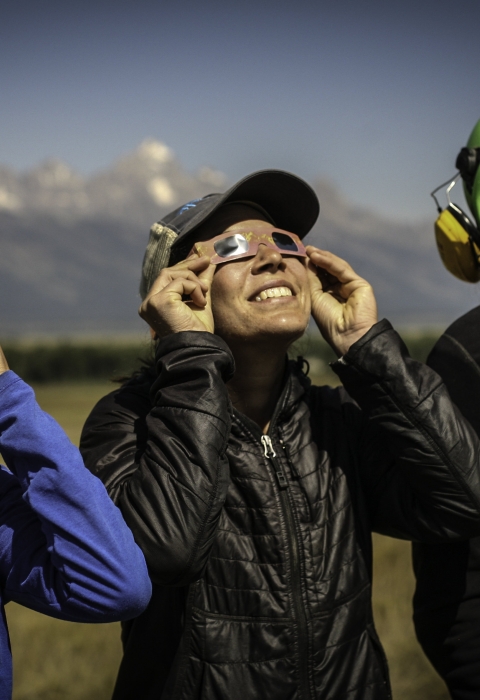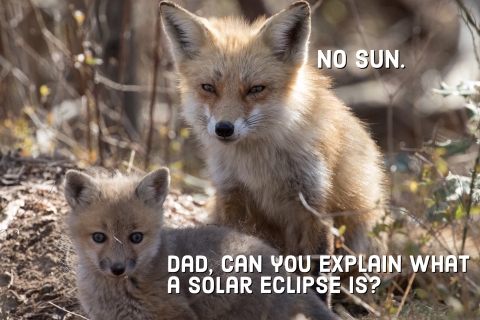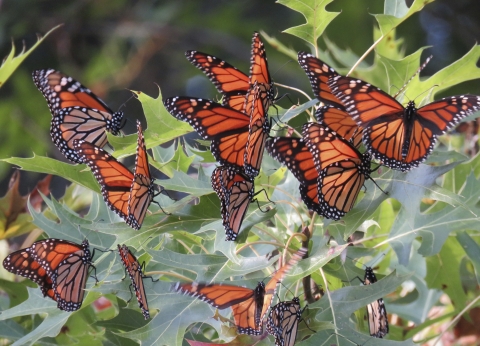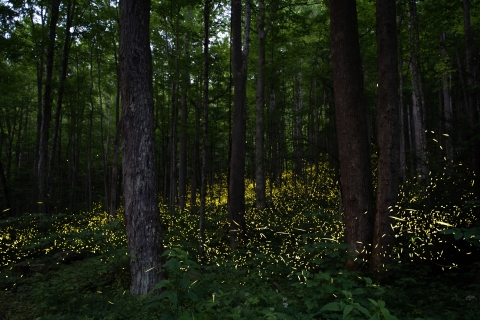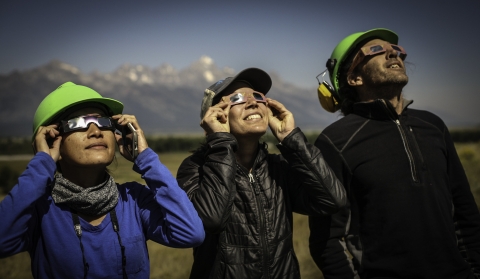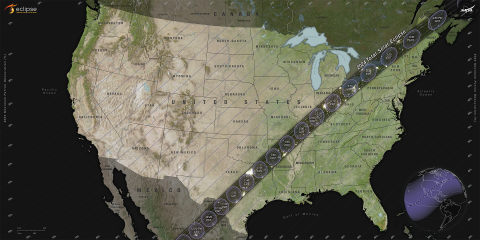Does a solar eclipse affect wildlife? The short answer – it does. Thank you for coming to our Ted Talk. The long answer – it does, and we can look to past eclipses for answers.
Throughout our history, we’ve had different human interpretations of a solar eclipse. Some cultures created folklore, myths and stories to explain the sun’s disappearance. While it would be cool if a dragon appeared to eat the sun, a solar eclipse is simply what happens when the moon passes between the sun and Earth, and day turns to night for a brief period of time.
Wildlife and Sunlight
Critters don’t have myths, nor do they have actual clocks, so they take their behavioral cues from nature. A darkening sky and lowering of temperatures brought on by an eclipse can cause wildlife to shift their behavior to nighttime routines.
The sun serves as a compass for many different species of wildlife. Monarch butterflies use the sun to help orient themselves during migrations. Bats use polarized sunlight at dusk to set their internal compass. Various bee species use cues like light intensity and temperature to dictate their daily rhythms.
Wildlife Behavior and Past Solar Eclipses
One of the most famous wildlife eclipse studies is that of entomologist William M. Wheeler. In 1932, he led a team that collected almost 500 observations from the public regarding wildlife behavior during an eclipse that happened that year. People reported observations that included crickets chirping, owls hooting and bees returning to their hives as the eclipse went on.
Fireflies
During the August 21, 2017, total solar eclipse, there were 10 observations from Missouri to North Carolina of fireflies from the species Photinus pyralis, flashing their lights when the eclipse reached totality. The arrival of darkness triggers many species of firefly to produce a chemical reaction that lights up their abdomen. This light is a signal to attract potential mates.
Spiders
During a total eclipse on July 11, 1991, in Veracruz, Mexico, there was a study of colonial orb-weaving spiders. The spiders were observed going about their normal daytime routines, until the darkness from the eclipse set in and the spiders began taking down their webs as if it were nighttime. After the sun reappeared, they began to rebuild their webs again like it was the start of a new day. This study was particularly interesting because scientists artificially lit some of the colonial orb weaving spiders' webs and those spiders with artificial lighting did not take down their webs during the eclipse.
Birds
The April 21, 2017, eclipse had plenty of anecdotal reports of strange behavior from various bird species. The Cornell Lab sorted through 1,350 eBird.org checklists submitted from the time of maximum eclipse and noted many interesting and unusual observations. Highlights included the appearance of nighthawks during totality, barred owls calling back and forth in the celestial blackout and confused black vultures coming in to roost and then quickly flying off once the sunlight returned minutes later.
Contribute to Eclipse Science
Despite a fair amount of anecdotal evidence, these rare celestial blackouts don’t happen often enough, leading to very little data on how an eclipse affects wildlife behavior. If you want to get involved and become a citizen scientist, NASA is asking for help with its Eclipse Soundscapes Project. This project is studying how the October 14, 2023, annular solar eclipse eclipses affected life on Earth during the October 14, 2023, annular solar eclipse and what the effect will be from the April 8, 2024, total solar eclipse. Let your senses and observations of nature, assist in contributing to science!
Safely Viewing the Solar Eclipse
While the wildlife is busy being puzzled about the sun’s brief disappearing act, we humans can be prepared for safe eclipse viewing. Safety is the number one priority when viewing a total solar eclipse. Familiarize yourself with the specialized eye protection designed for solar viewing by checking out these handy NASA safety guidelines. One of the safest, easiest ways to view an eclipse is by projecting its image onto a piece of white paper.
National Wildlife Refuges in the Eclipse Path
More than 30 national wildlife refuges are in the path of totality during the April 8, 2024, total solar eclipse. With over 570 national wildlife refuges across the country, chances are that there’s a refuge near you. See if there is an event in your area and please contact the refuge prior to booking or planning your travel, as many sites have limits on the number of people allowed.
Whether you travel near or far we hope you get a chance to step out into nature and experience one of these rare events in your lifetime. If you do, take notice of your local wildlife. Use your senses to spot changes in their behavior. After all, Bonnie Tyler said it best when she sang, “A total eclipse of the mart-en,” or something like that.
